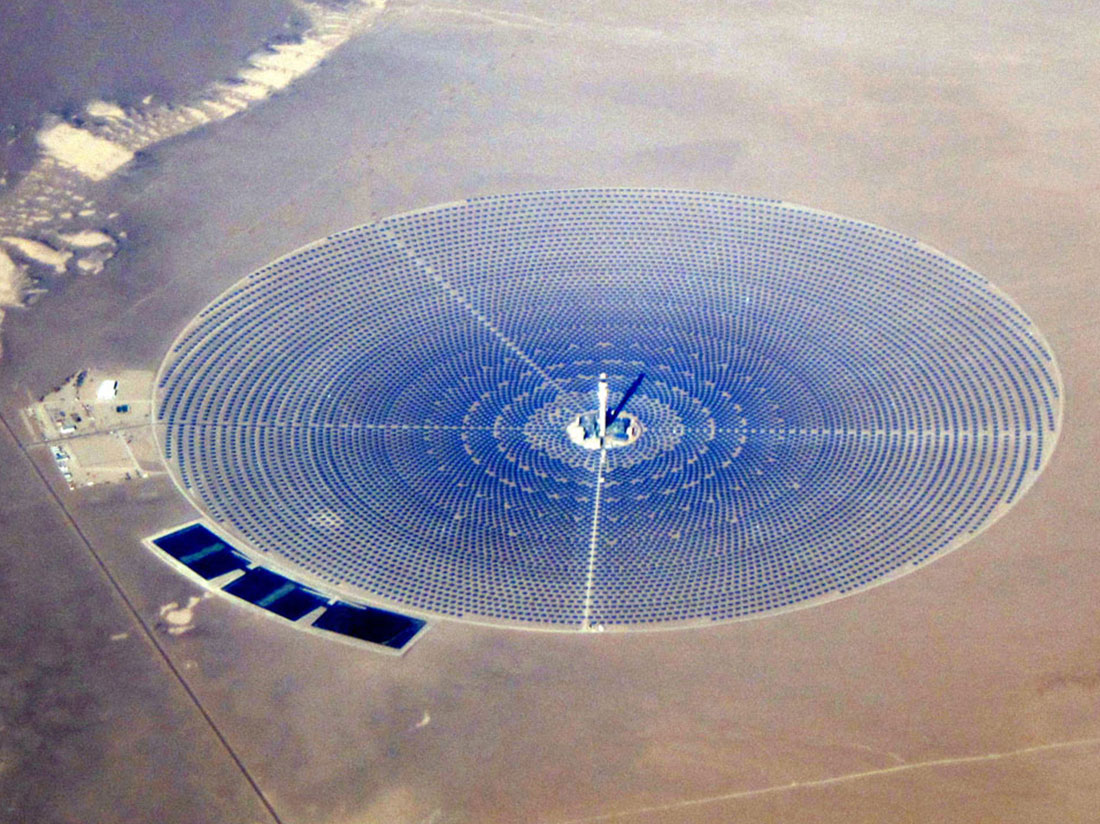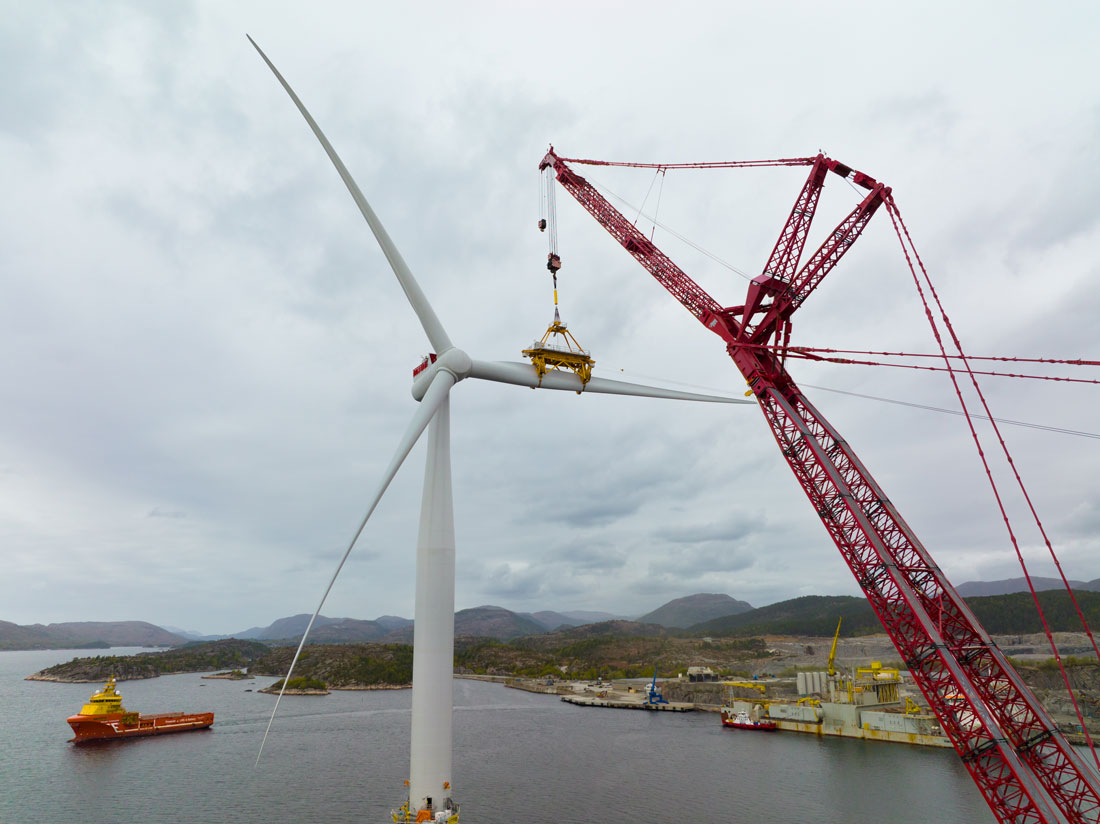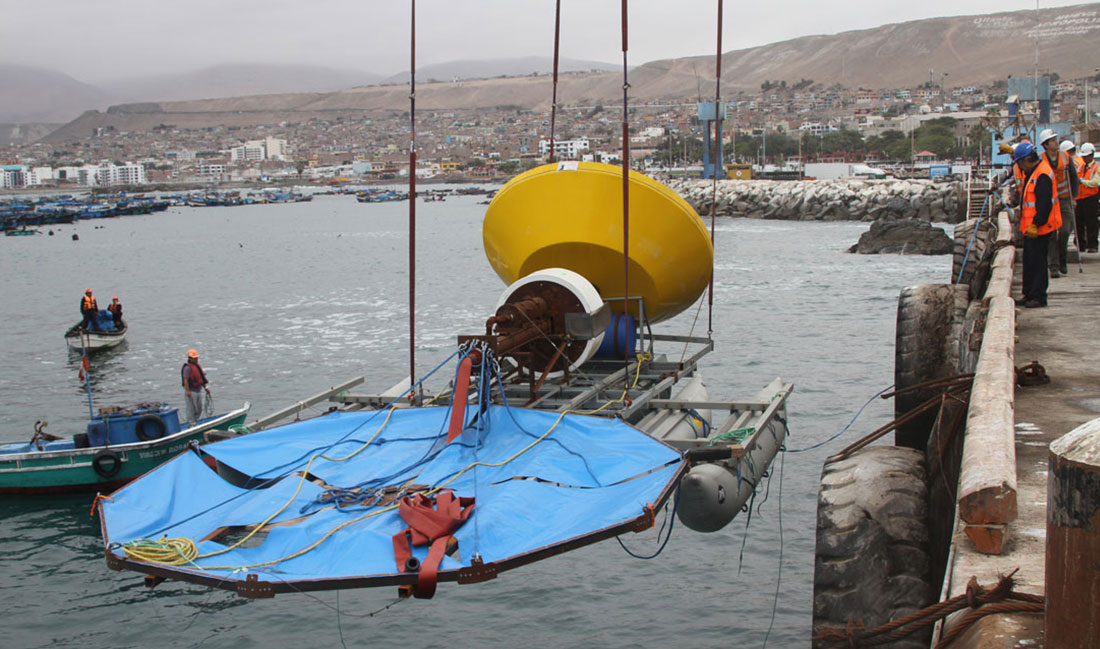The solar park at Ashalim in the Negev desert, Israel, came on-line in 2019.
In these times of pandemic, scarcity and war, energy and electricity prices have soared. Sanctions against Russia will oblige Europe to source its energy elsewhere, and this will take time. But this crisis is also an opportunity to accelerate a change that should be happening anyway – and soon, given the massive threat to the planet posed by global warming.
By James Chater
Background
Net-zero carbon emissions by 2050, anyone? Valuable time has been lost, but it is still doable, according to Yale and Columbia Universities’ Environmental Performance index (1). However, the report also states that the UK and Denmark are the only two countries on track to fulfil this pledge! The stakes are high: according to the latest IPCC report, released on 28 February, even temporarily exceeding the 1.5°C limit will have a severe global impact.
Fossil fuel prices had already been rising before the Russia-Ukrainian war caused a further spike. This makes renewables more competitive with fossil fuels and, with Europe struggling towards a ban on Russian fossil fuel imports and scrambling to find alternatives, if ever there was a time to accelerate the transition towards a low-carbon future, it is now.
Table . Capacity additions in 2021

(https://www.iea.org/reports/renewable-energy-market-update-may-2022/renewable-electricity)

Energy types
“Renewable energy” can be defined in various ways. Even though biofuels are a form of renewable and nuclear energy is considered by some to be a renewable, the discussion here is restricted to hydro, solar, wind and geothermal.
Hydro
Hydro-electric power is still the largest source of renewable electricity (16% of global share) and is expected to grow by 50% by 2040. Most of the growth is occurring in Asia, which also hosts the largest ever project, China’s Three Gorges Dam. It is a stable source of energy, but vulnerable to droughts (for instance, US hydro declined by 14% in 2021 because of the prolonged drought in the west). It can be controversial because of concerns about ecosystems, river flows and human displacement. This and the limited number of suitable new sites are factors that will curb its future growth. It is already growing less fast than wind and solar. The IEA expects hydro’s share of the renewable electricity to fall below 50% in 2024, as that of wind and solar increase.

Solar
Solar and wind are the rising stars, mainly because prices have plummeted over the years, and they are relatively easy to instal. (Prices ticked up in 2022, breaking a long-term trend, but they are still competitive with fossil fuels as these too have risen in price.) However, both are vulnerable to weather fluctuations (the wind does not always blow; the sun does not always shine), so can work effectively only in tandem with efficient storage systems (see under). Growth in solar PV has been spectacular and is expected to contribute 60% of the growth in renewable capacity in 2022 (2). It can be installed flexibly to fit in with existing superstructure: on roofs, as roofs, floating on water, as paving… Technical innovations continue to improve efficiency. For instance, by combining a perovskite solar cell with a textured silicon solar cell, an efficiency of 29.2% can be achieved. One of the most ambitious PV projects is the planned 1100MW project in Port Açu and additional locations in Brazil, to be built by a Chinese consortium.
Less flexible and more complicated to site is Concentrated Solar Power (CSP). This is a much smaller market than PV and uses a more expensive technology, but it has the advantage of integrating energy capture and storage, often using molten salt as a medium. Spain and the USA are the market leaders. The largest current such project is the UAE’s Noor Energy 1.
Did you know?
At the University of Cambridge, researchers are using algae to power a computer by causing photosynthesis to generate an electric current. The ultimate source of energy is the sun. The resulting current interacts with an aluminium electrode which is used to power the microprocessor.


Wind
The second renewable “star” is wind energy, with onshore additions from 2021-6 set to increase by 26% compared the period 2015-20. As turbines get larger (China’s MingYang Smart Energy having just set a record at 242 metres of diameter), larger economies of scale are achieved. China accounts for around half the onshore additions since 2015, with Europe and the USA in second and third place.
The offshore sector is smaller but is also expected to grow rapidly. It has at least two advantages over land-based wind power: steady wind sources and synergy with tidal/wave energy and seawater desalination (for example, TechnipFMC and Bombora’s project combining wave and wind power). Another advantage is that floating wind turbines are likely to gain in importance as a way of generating electricity in deep water. Most of the projects up to now have been Europe-based, concentrated in the North Sea and the Irish Sea (the Equinor/SSE Dogger Bank, BP’s Morgan and Mona 3 GW project; the Norfolk Offshore Wind Zone), but offshore wind investments are now taking hold in the USA (which aims to instal 30 GW by 2030), Vietnam, Taiwan, S. Korea and Japan.
Energy storage
Solar and wind power are intermittent forms of energy and cannot function properly unless storage can be used to capture excess energy at times of energy abundance and release this energy when demand exceeds supply. The oldest form of energy storage occurs in hydro energy, when water is pumped uphill then released to drive a turbine. Gravity is also used in other devices, and other alternatives include compressed air and cryogenic air. But the fastest growing storage device is the lithium-ion battery, also used in electric vehicles. But lithium is expensive, bulky, causes fires and, being sourced mainly in China, is subject to geopolitical risks. So scientists are researching alternatives, though as yet no clear leader has emerged.
Another fast-growing storage device is hydrogen, which is “green” if produced by electrolysis fuelled by renewable energy. It can be stored and transported in compressed or liquefied form.
Wave and tidal
Wave and tidal energy exploits waves and tides to capture energy. It could equally be called “lunar gravity” energy and has the advantage of being constant. Various technologies exist, but high costs have meant that progress has been slower than with solar and wind. It has taken until 2023 for the first commercial wave energy project to come online, off Póvoa de Varzim in Portugal. From 2023-4 the market is expected to accelerate, with growth of 33.2% between 2021 and 2028. Apart from Portugal, countries pursuing wave/tidal energy include Chile, the UK, USA, Australia and S. Korea.
Geothermal
Another energy type that has lagged because of costs, but which holds great promise, is geothermal power. Advantages include a steady heat source and synergy with combined heat and power (as in the Eden Project in Cornwall, UK). Up to now the number of sites has been limited to those where geothermal heat lies close to the earth’s surface, but a new project by MIT could change this. Quaise, an MIT start-up, plans to drill 12 miles into the earth using fusion drilling, which it is hoped will make a near limitless source of energy more easily accessible.
Materials
The current supply chain issues with materials means that even renewable energy, to some extent, is vulnerable to supply shocks. The rare earth materials used in battery storage and superconductors are largely sourced from China. Nickel, an essential ingredient in most energy applications, is in great demand but fortunately can be sourced from several countries. One important emerging field for stainless steel is wave and tidal energy, a marine environment requiring duplex grades such as 2205 and 2507, which are stronger and more corrosion-resistant than 316L. Bumax has developed stainless-steel fasteners for offshore tidal and wind turbines. Its BUMAX® 88 (316L) grade has been used in stud bolts, washers and nuts. Bearings used in wave energy converters use 316 stainless for parts above the water line and ceramic (ZrO2 stabilized with yttrium oxide) for submerged applications.
Wind turbine components (shafts, gears, generators and fasteners) use a number of stainless steels including several Ni-bearing grades, especially austempered ductile iron (ADI). Stainless steel is also used in the solar receiving pipes in CSP, which need to withstand temperatures of 500°C and molten salt corrosion. One such material is the austenitic 321, used in the pipes Butting recently supplied for Noor 1. Montanstahl and Outokumpu are among the suppliers of grade 347H for thermal storage tanks. Heat exchangers, water-handling systems and flanges are also made of stainless steel. Heliostat fixings (anchoring bolts) also use stainless steel (such as the lean duplex LDX 2101) to withstand tough environments where sand, moisture, corrosion and extreme temperature fluctuations are present. For structural applications on wind towers, duplex grades are often specified (for example, on the Merkur offshore farm in the German North Sea). Geothermal energy knows severe corrosive conditions, with high chloride and H2S contents and low pH, requiring highly alloyed corrosion-resistant materials such as duplex, super austenitics and nickel alloys, even going as high as 625 and 825. The demand for such materials will increase the deeper the wells become. They are used in production tubing and casing, heat exchanger tubing and coiled tubing for injection lines.


References
(1) Maggie Astor, “Trump Policies Sent U.S. Tumbling in a Climate Ranking”, New York Times, 31 May 2022
(2) https://www.iea.org/reports/renewable-energy-market-update-may-2022/renewable-electricity
Every week we share a new Featured Story with our Stainless Steel community. Join us and let’s share your Featured Story on Stainless Steel World online and in print.


